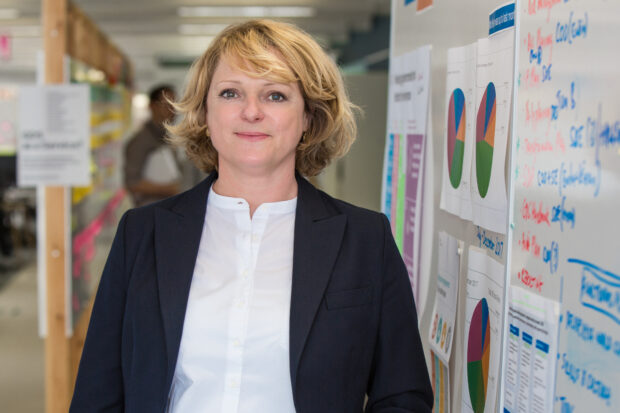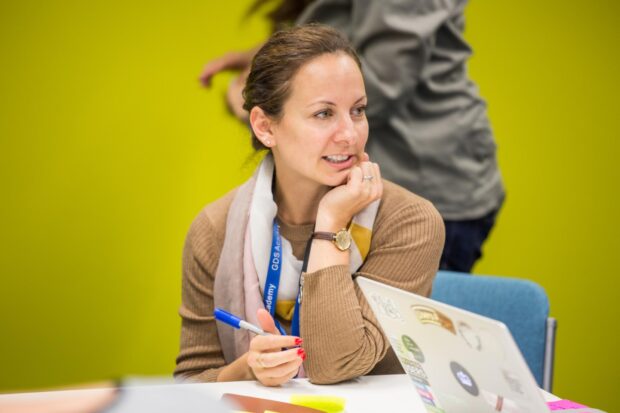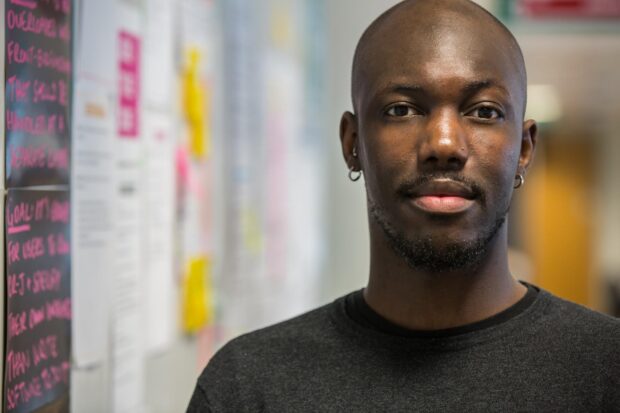
This week is Digital Leaders Week, created to celebrate and showcase the best digital transformation across the public, private and nonprofit sectors.
One of the events taking place is the DL100 Awards, where our own Digital, Data and Technology Profession team has been shortlisted in the Digital Team of the Year category.
To mark this special week, people from across the Government Digital Service reflect on the role that digital leaders can have in transformation and the qualities a good digital leader should have.
Simon Everest - Service owner, Standards Assurance

I’ve been really lucky to work with great digital leaders in my time in GDS. Leadership isn’t constrained to specific roles or grades, but is an attitude and approach to the problems we’re all trying to solve for users of government services.
The best digital leaders are humble and collaborative, yet ambitious and creative. Paul Downey’s development of GOV.UK Registers, John Abbott’s transformation of HM Land Registry and John Fitzpatrick’s passion and energy at the Ministry of Justice are all great examples of inspiring digital leaders who have made a significant difference in their organisations, for their users.
They have vision and a great understanding of user-centred digital service development and agile ways of working. This is combined with an ability to inspire, trust and learn from the teams and specialists around them.
Emily Ackroyd and Hazel Hobbs - Directors for Strategy and Engagement

Digital leadership is not about understanding specific technologies, it’s about understanding people. It’s about setting aspirations, creating culture and building capability.
The leaders we admire and who are transforming services across the public sector - from Universal Credit to our courts and borders - do 3 things brilliantly.
Firstly they give teams the space to be disruptive and creative: increasingly leaders need to change the organisation around them rather than just work within structures created for a different age. That requires permission to challenge, try new things and learn from when things don't work.
Secondly they work in partnership with others - the GovTech Catalyst programme is a good example. This is about working with business and tech entrepreneurs to define and solve the most important policy and operational problems, not inviting others in to deliver after the service has been designed.
Thirdly they are comfortable with ambiguity. What we have realised working at GDS is that digital and data innovation is going to continue at pace. This means being humble about what you don’t know and embracing the need to constantly learn and change.
And one thing that is critical in the public sector is that we lead inclusively and insist on having diverse design and development teams. We can only serve the needs of all citizens if our teams are reflective of society.
We've been inspired in our role as part of the Digital Leaders Advisory Board by the brilliant young leaders who are showing the way on mission-driven ways to give everyone the skills to thrive - and we’re looking forward to seeing their work recognised in the Digital Leaders Awards on 21 June.
Nick Tait - Head of GovTech

Leadership has little to do with making things go faster, and considerably more to do with doing things better. Better for the people doing the work, better for the broad array of stakeholders and better for the users, whose need is being met by the outcomes of the work.
Doing things better is hard because it presupposes you know what you are doing and why you are doing it. You have to understand and be clear on your goals and your vision, and the outcomes you want your projects, programmes and organisation to meet. And you have to have the trust and explicit support of everyone around you.
I have had the good fortune to work with many great leaders. By leader I don’t necessarily mean someone who is at the top of a tree, or a hierarchy. Rather, a leader is someone who is open, honest, kind, and able to carry and manage risk and uncertainty, and in doing these things inspires people to follow them.
Remember, great leaders are humans too. Some of them have challenged me to look at how and why I am working on a thing in a different light. They have asked me difficult and often searching questions with kindness and support and have encouraged me to be and to do the best I can.
Great leaders, digital or otherwise, have a strength of vision, a palpable appetite for considered risk and an approachability that encourages discussion and openness. They know when to ask questions, when to listen and when to stand back and let people forge ahead.
Jen Lambourne - Lead technical writer

For me, good leaders are those who know the difference between stepping in and stepping on toes. Many leaders are quick to give advice, but can inadvertently force out ideas or give the impression that it’s their way or the highway. The best leaders I’ve worked with give teams space to experiment and are quick to admit when they don’t have all the answers.
I’m lucky enough to be part of both the content and technology communities at GDS. Leaders in both of those communities make a lot of effort to be visible, which is so much more than just working in an open-plan office.
They are often still practitioners, involve teams in decisions, discuss constraints honestly, and use their position as leaders to advocate for teams and individuals.
I’ve heard so many organisations insist their leaders do all this, but GDS is one of the very few places I’ve seen it in reality.
Sally Meecham - Chief operating officer

Good digital leaders come in all shapes and sizes, grades and job roles.
Some of the best digital leaders I have worked with may have initially described themselves as ‘non-technical/ non-digital’. However, what they did do was create a trusting and open culture; actively encourage collaboration and innovation; empower at all levels and provide the tools, technology and processes to enable agile working and end-to-end transformation.
Tyronne Fisher - Business analyst, Digital Marketplace

I have been working at GDS for almost 2 years now, and I have been fortunate enough to experience a passionate organisation driven by great leadership. Enabling an organisation to feel motivated and integral to helping government transform for the better comes from having a clear direction and focus from leaders.
I have worked with some great leaders who possess great interpersonal skills which have helped to provide clarity about the GDS vision. I think great digital leaders will not only be equipped with a wealth of digital knowledge, but also strive hard to create and maintain a safe working environment which enables you to thrive and be innovative.
I have seen leaders in GDS place great emphasis on creating the right culture. This has certainly helped me to become more productive and feel comfortable contributing to changing things for the better, to support government reach its desired goals.
Holly Ellis - Director of Capability, Digital, Data and Technology Profession team

A good leader shares their knowledge and expertise to grow the people around them. They provide enough direction but allow teams to make decisions and empower them to deliver. The best leaders I have worked with are those that I have learnt from - that haven't shied away from giving feedback when it is needed in the spirit of helping me grow.
Strong leaders have courage in their convictions, front up to the big challenges, and navigate and unblock organisational 'systems' to help their teams achieve their objectives. They listen, they support their teams and they lead by example. They also get their hands dirty and get stuck in, in whichever way needed, to achieve success.
Daniel Sintim - Early talent recruiter

I feel that in the digital age, a leader needs to be comfortable and confident with the constant change and evolution of the digital sphere. A successful digital organisation is only as good as the executive chosen to lead the transformation. I think as a digital leader you really have to recognise the power of technology and be able to put tangible plans into action.
In my opinion, the great digital leaders in the world know how to tap into a diverse range of highly skilled individuals. A good digital leader must also take on the role as a mentor. They should naturally position themselves as an influencer. And above all, their enthusiasm for digitalisation needs to be contagious!
If you want to find out more about the work of the Government Digital Service, we’re speaking and running workshops at Civil Service Live around the country in June and July and at the Public Sector Show in London on 26 June.
We're also hiring! To find the latest roles at GDS visit Civil Service Jobs.
Subscribe for updates when new blog posts are published.


2 comments
Comment by Jenny Mulholland posted on
Love all this. Better not faster. Open discussion and approachability. Not being scared to take a calculated risk. Seeking out a diverse team. Being humble and collaborative just as much as ambitious. Fronting up to the big challenges.
Thank you for the inspiring food for thought!
Comment by Liz-Ann Rodrigues posted on
Great post highlight the difference between leadership and management. This also brings to life how leadership is demonstrated in every role rather than at senior levels.